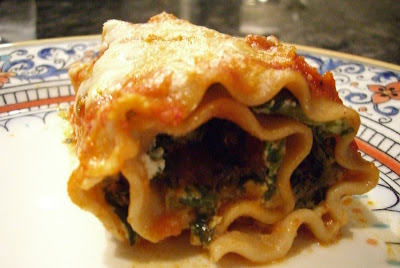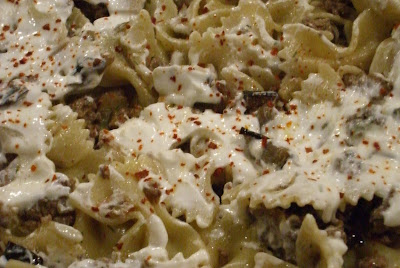
I have been receiving Gourmet, monthly, since 1990 and, until a few years ago when I began clipping the recipes I wanted to try and then recycling the remainder of the magazine, I saved them all. I guess I'm a pack rat of sorts, honestly come by via my Dad. My kitchen is packed with over a hundred cookbooks as well as assorted issues of Bon Appetit, Food and Wine and my shelf of Gourmet. These magazines somehow made the cut (or wholesale purge of extraneous possessions) during moves in 1990, 1994 and 2006. With each move, the commitment was greater - the first time, there were fewer than a year's worth, while during the last move they filled a couple of boxes. A few months ago, I considered tossing them, or maybe donating them to a school yard sale, but didn't and now that Gourmet has closed up shop, I'm so glad I saved them.
I've always enjoyed reading Gourmet, even in the earlier days when I worked long hours and carry out was my best friend. Cook or no, there was much to love about the magazine, with it's literary articles, glossy photos that draw you right up to the table and the extensive travel features. All you needed was a love of food. For me, travel is always intricately tied in to the food of the locale, so I loved reading about how food affected and even guided other people's trips. This was especially so after Ruth Reichl took over. It's been a treat to travel the world with Gourmet.While many of the recipes might have been more complicated or time consuming than I would make regularly, others have been simple and delicious.
I've been skimming some of the collection lately and am planning to participate in a monthly project in which food bloggers cook an item from that month's issue from any year, and then submit it to one central blog called Gourmet, Unbound. Sort of a Gourmet tribute blog. In preparation for the January event, I made a soup from the January 1990 issue - my very first - called Portuguese Kale and Potato Soup.
I prepared this soup in anticipation of a snow storm cum blizzard which eventually dropped 23 inches of snow according the the tv news. Pretty unusual for the DC area! We initially ate it as we watched out the window for the snow to begin, which unfortunately happened before our teenaged son could get home from an evening activity. The snow began falling around 9 p.m., and the roads iced up pretty quickly, making for a white-knuckle trip home for him around 10 p.m. By morning, we must have had almost a foot of snow. We cleared the walkway and front steps, window well covers, HVAC units and the car left outside and parts of the driveway a total of three times, twice on Saturday and again on Sunday. Between the two bouts of shoveling on Saturday, we were able to eat the leftovers for a warming and delicious lunch.
I had planned to use the kale I had growing in my outdoor ornamental pots, sort of a pre-snow final harvest, but the plants were saggy and wan due to the recent cold snap. Instead, I used some really perky and bright chard I had found at the grocery store earlier in the week and had not yet figured out how or when I would use. While at the store in a final pre-storm shopping trip, I also tried to replace the moldy chorizo that had been hiding in my deli bin for more months than I can remember. Though successful with the chard, I was unable to find chorizo in that store and substituted Portugese linguica sausage which is pretty similar. I figured that it's a Portuguese soup anyway. In fact, this is really a caldo verde, which should use linguica. Lastly, I didn't even bother to remove the russet potatoes from the pot to a blender. I simply crushed the chunks against the side of the pot with the back of my spoon.
Healthwise, with a pork sausage, there's always a little fat. However, you could easily substitute a lower-fat spicy turkey or chicken andouille sausage. As always, though, check the sodium content on the stock and sausage! With all the greens, and carrots, though, this is not so bad a choice, especially after a good shovelling workout.
Funny, as I searched Epicurious for a link to the recipe, I found that in the last issue Gourmet published, November 2009, they included a similar soup. While they didn't rename it, this time they acknowledge that the soup is actually a Portuguese caldo verde, and recommend using either chourico or linguica sausage, as I did.
It was delicious and warming for this time of year, and relatively easy to prepare. You can find the recipe as printed in 1990 at:








